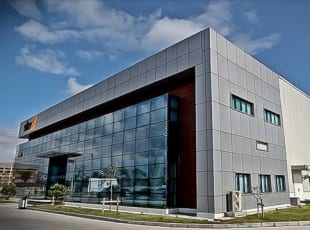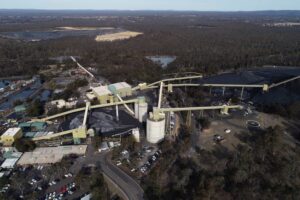 In the aftermath of a climate march that brought more than 300,000 people onto the streets of New York City, many are asking whether yet another demonstration, even one so large, was really all that effective.
In the aftermath of a climate march that brought more than 300,000 people onto the streets of New York City, many are asking whether yet another demonstration, even one so large, was really all that effective.
The politics certainly won’t change on a national level. But New York state is demonstrating that a firm commitment to a climate-focused economic policy — which includes attracting large clean energy technology companies — can certainly change an industry.
Today, SolarCity came to an agreement with New York state on an incentive package that will help the leading residential installer build a solar manufacturing plant capable of producing a gigawatt of panels per year. In June, SolarCity, bought the high-efficiency solar manufacturer Silevo for $200 million, with another $150 million set aside if production targets are achieved, in the hopes of further dominating residential solar through vertical integration.
According to Governor Andrew Cuomo’s office, New York has agreed to give SolarCity $750 million in tax breaks and cheap power deals in order to build the production facility, as well as develop another R&D facility somewhere in the state.
The announcement comes weeks after Tesla — which has boardroom connections with SolarCity through Elon Musk — officially announced it was building a $5 billion Giga factory in Nevada to produce lithium-ion batteries for cars and grid storage applications.
SolarCity said it would spend $5 billion over the next decade in New York through both manufacturing and installation.
New York Governor Andrew Cuomo was in Buffalo today to help officially break ground on SolarCity’s plant. The governor’s office said that 2,850 jobswould be created through direct construction and local supply agreements. SolarCity said that it would create another 2,000 jobs in New York over the coming years through expanding solar installations across the state.
Over the last year, SolarCity has acquired a leading racking company and a lead generation firm in order to drop installation costs and make customer acquisition more efficient. Executives at the company say they will pursue any option to help it scale.
“Anything that will reduce our total installed cost, we will be interested in acquiring,” said SolarCity CEO Lyndon Rive in a call with investors after the Silevo announcement.
By getting into solar manufacturing, SolarCity hopes to guarantee a steady supply of panels to install “tens of gigawatts” of solar per year in the U.S. SolarCity executives also hinted at integrating inverter manufacturing at the site.
New York officials are celebrating a positive economic announcement today. But does SolarCity’s strategy stand a chance well into the future? As recent history has shown, solar manufacturing, particularly in higher-cost markets like the U.S., is not an easy business.
In July, GTM Research’s Lead Upstream Analyst Shyam Mehta wrote a mildly skeptical article about Silevo, but said market timing and cost structure may make work in its favor.
“Silevo is not a guaranteed success story. And it’s unclear if the acquisition really even makes sense for SolarCity. But unlike with Solyndra, whose prospects we were skeptical of even during the best of times, there is legitimate cause for optimism in Silevo’s case,” wrote Mehta.
Listen to the Energy Gang debate whether SolarCity’s move makes sense:
Below are some takeaways from SolarCity’s call with investors in June after the acquisition was announced.
Supply
Musk explained that SolarCity plans to install “tens of gigawatts per year” over the next decade. But the company won’t be able to reach its expected scale without a steady supply of modules. “If we don’t do this, we thought there was a risk of not having solar panels in the long term,” he said.
Technology
Although manufacturers are starting to boost idle production to match increasing global solar demand, SolarCity isn’t interested in conventional crystalline-silicon panels. “We’re seeing high-volume production of basic panels, but not high-volume production of advanced panels,” said Musk.
After looking at more than twenty manufacturers, the Silevo high-efficiency technology was “the best-performing” and offered the ability to scale most quickly, said Peter Rive. He also said that the company would spend much more on technology R&D over the coming years, but could not quantify how much.
Full integration
It’s no secret that SolarCity sees vertical integration as the fastest way to lower the cost of solar energy. But the company wants to go deeper than any other competitor by potentially adding power electronics and battery storage into its production strategy.
Lyndon Rive hinted at future acquisitions of inverter suppliers and a strategy to add storage into the production facility. “Anything that will reduce our total installed cost, we will be interested in acquiring,” he said.
Unsubsidized solar
If there are any worries within SolarCity about the looming expiration of the federal Investment Tax Credit, the team did not show it. Rather, they expressed a deep confidence that a manufacturing strategy could make them competitive without tax benefits over the coming years.
“The goal is to be competitive with no subsidies at all,” said Lyndon Rive. “With the Silevo acquisition, that’s what we believe we can do.”
Musk also described the need for deeper integration in order to stay competitive: “We’ll be actively looking at additional companies to acquire, as well as building up engineering to achieve that goal.”
Unprecedented scale
The planned 1-gigawatt cell and module facility in New York may be unprecedented, but SolarCity executives said it’s “just the start” of even bigger scaling plans.
“The crazy thing is that the gigawatt plant will almost be a pilot,” said Musk. Musk and Lyndon Rive said that 10 gigawatts of production capacity could feasibly be in the works, assuming the company grows the way they think it will.
Ultimately, SolarCity is not investing in Silevo as part of a short game. Lyndon Rive described the need to think about position in the market over the coming decades, not just over the next few years.
“We can now control the installed cost per kilowatt-hour. If you do that, the market is infinite for the next 30 or 40 years,” said Rive.
Source: Greentech Media. Reproduced with permission.







